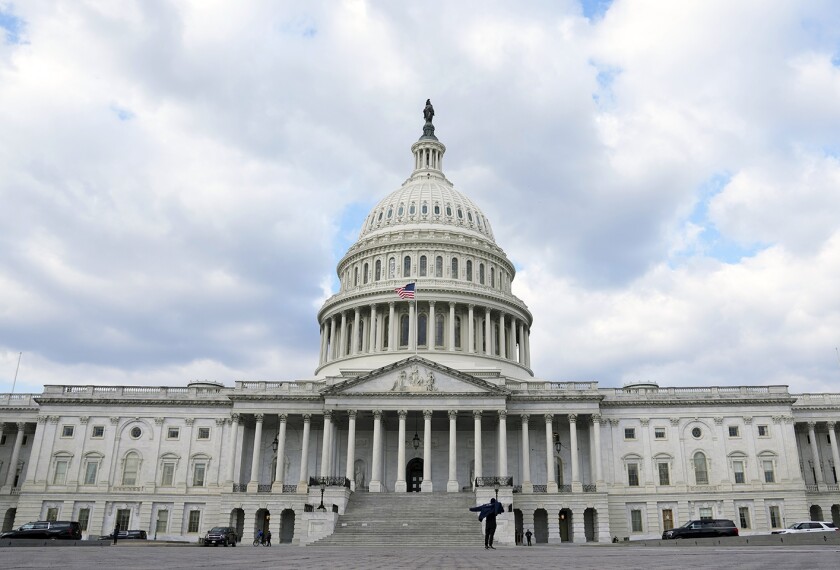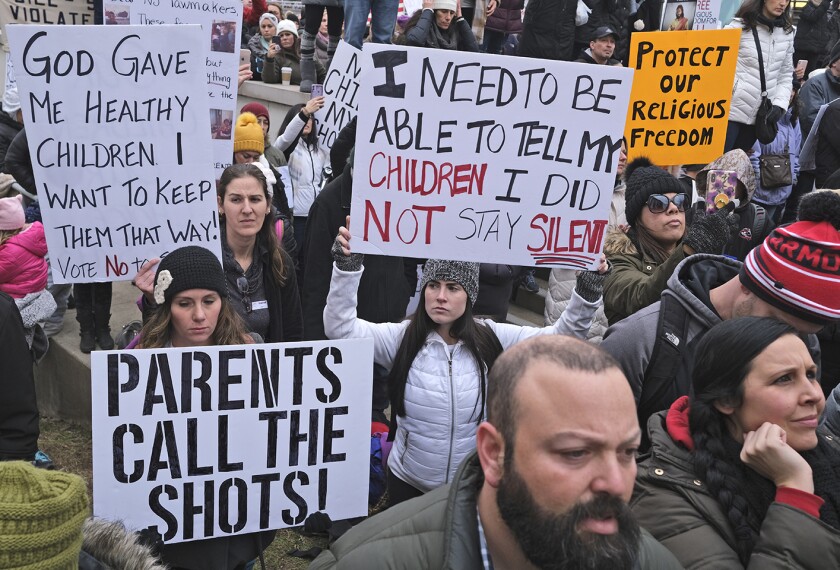For the sixth consecutive year, the District of Columbia has fallen short of meeting federal special education goals, the worst record of any state in the country, according to the latest annual state ratings from the U.S. Department of Education.
Since the 2004 reauthorization of the Individuals with Disabilities Education Act, states have been required to draft plans that say how they will meet the requirements of the law for school-age students, and then report on how they lived up to their plans.
The annual reports have to include analyses of factors including disproportionate rates of suspension and expulsion of students with disabilities; disproportionate representation of racial and ethnic groups in special education programs, and whether that is the result of inappropriate identification; and how quickly students are evaluated for special education services. The federal Education Department evaluates those reports, and states are rated as: “meets requirements,” the designation earned by most states; “needs assistance;” “needs intervention;” or “needs substantial intervention.” The last three categories require some kind of involvement by the Education Department, starting with requiring states to get technical assistance and escalating to the department dictating how federal special education money is spent or having some of their dollars withheld.
There are plans to change the annual reports, to some extent, before states are rated next year.
Although federal special education officials acknowledged the district’s improvement in many areas, the school system and charter schools in Washington are still working through a backlog of long-standing issues with educating students with disabilities, earning the jurisdiction yet another “needs intervention” rating from the Education Department in this year’s ratings, which reflect the 2010-11 school year.
Late Evaluation
In particular, the schools, which serve a combined 77,000 students, were cited for taking too long to evaluate students with disabilities, re-evaluate them when necessary, correct areas of noncompliance, and implement hearing officers’ decisions. The district’s problems with evaluating and re-evaluating students have been in the cross hairs of the department for more than a decade, and the federal and local government have had multiple agreements attempting to address this issue dating back to at least 1998.
While 10 other state and territory school systems, including the Federal Bureau of Indian Education schools, received a “needs intervention” rating from the federal government this year, no other state comes close to having as consistently poor a record as the District of Columbia for its provision of special education services. For example, after being rated “needs improvement” by the Education Department for several years, Colorado was rated “meets requirements” this year.
District of Columbia schools also fell short in preparing students with disabilities for life after high school, a new measure of quality that was cited as a problem in several other states.
Turning Point
Although the picture of special education in the District of Columbia is still cloudy, federal and local special education officials say it took a turn for the better when a separate state education agency was created in 2007.
While most school districts report to a state education department, before 2007, schools in the District of Columbia didn’t have that additional layer of support and expertise between them and the federal Education Department. In addition to traditional public schools, there are 53 charter schools in the district that each function as its own district.
“The big turnaround came when they created a separate office of the state superintendent of education,” said Paul Steenen, the director of communications for the department’s office of special education programs. “With the development of a [state education agency], they were successful at bringing in some very high-quality staff and put systems in place that are slowly but surely resulting in compliance on these indicators.”
One of the major victories of that new agency: This year marks the first time the District of Columbia’s data about its 12,500 students with disabilities in public schools, charter schools, and private placements are considered valid and reliable for all 20 areas the federal Education Department examines, said Amy Maisterra, the assistant superintendent of specialized education for the office of the state superintendent. Many indicators require complex calculations and intensive data collection.
And as the state agency has gotten off the ground, it’s been able to provide a robust monitoring arm and give technical assistance to Washington’s district and charter schools. It also helps district and school officials better understand their obligations to students with disabilities—and how to meet those obligations.
“It takes time,” Ms. Maisterra said. “I think you did see that acknowledgement from the Department of Education.”
As part of the strategy to improve the district’s special education services, the federal Education Department has supervised some of its spending for the last few years, directing the state education agency to spend $500,000 in money that would have paid for administrative costs at the state level on evaluating students—in addition to whatever else was already budgeted for those purposes.
That will continue for another year, said Ruth Ryder, the deputy director of the federal Office of Special Education Programs.
Beyond High School
But for the coming year, $250,000 of the set-aside must be dedicated to another area of trouble for the district: planning for life after high school for students with disabilities.
For the first time, states’ work with preparing students with disabilities for the workplace or for additional schooling after high school was taken into account in the ratings. States were rated on the percentage of youths with disabilities age 16 and older whose education plans include measurable goals for beyond high school and plans to help students attain those goals.
“We want all students to be college- and career-ready,” said Melody Musgrove, the director of the federal office of special education. “For students with significant cognitive disabilities, there’s an expanded definition of college- and career-ready. ‘Career’ may be supported employment.
“We want as many students as possible to be going to college, or getting technical education—whatever is the appropriate thing for that student,” she continued. “What we have seen in the past is that students with disabilities aren’t doing any of that. They’re sitting at home.”
The district’s low percentage of education plans that outlined goals for life after high school and how students with disabilities would attain those goals has been on the federal radar since 2009. In the most recent report to the Education Department, the district reported that only about 7 percent of plans had postsecondary goals outlined.
The latest random sample of the education plans of 100 special education students 16 and older found that 41 plans had post-school goals, which the Education Department said is progress, but still not good enough.
During the next year, random samples of 100 education plans must be pulled repeatedly and checked for transition planning.
While other states also reported low rates of transition planning—12 percent in Utah, 31.5 percent in Georgia, 36 percent in Idaho—those states were referred to technical assistance resources and don’t have such scripted monitoring in their future. Among the states that were chided by the Education Department for their low transition-planning rates, those rates are starkly different than even the District of Columbia’s latest numbers. For example, Wisconsin earned a “needs assistance” rating because too few students’ education plans included objectives and paths to life after high school, but more than 72 percent of plans in that state did address transition.
Entirely different issues were problematic in some other states. For example, New York and Oklahoma didn’t provide valid data for districts in which students with disabilities were suspended or expelled disproportionately based on their race or ethnicity.
Both states earned “needs intervention” ratings.
Valid Data Needed
“Without valid and reliable data for this critical indicator,” Ms. Musgrove wrote in letters to those states, “the state is unable to identify and correct problems in these areas that lead to significant discrepancies by race and ethnicity in the administration of discipline and the public is unable to determine if the state is in compliance with these requirements.”
Going forward, the office of special education programs plans to rework the annual state ratings to concentrate more on how students with disabilities perform, not just whether states have met their legal obligations, to states’ delight.

“Unfortunately, so many person-hours are spent on gathering the data and preparing the report that little time is left over to actually address issues raised by the data,” said Nancy Reder, deputy executive director of the National Association of State Directors of Special Education, in Alexandria, Va., which has been pushing for a greater focus on outcomes.
While federal monitoring of some specific issues has improved states’ work in those areas, Ms. Ryder said at a special education conference last week, concentrating almost exclusively on compliance hasn’t made much of a difference where it counts: students’ test scores and dropout rates, among other outcomes.
“Where we put our emphasis is what improves. We’ve seen this across many of our compliance indicators,” she said. But, “we’ve got to pay more attention to student outcomes.”




